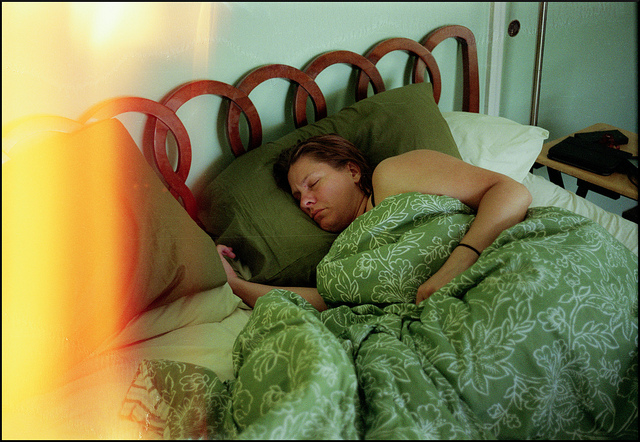It was an important meeting at work. But I had no recollection of what went on in that one hour meeting with ten other colleagues.
Why? Because I just couldn’t keep my eyes open. I slept through most of it.
What’s worse is that I continued to sleep even after some of my peers tried multiple times to rouse me from my slumber. It was rather embarrassing.
Think of the scene in the popular series Friends where Chandler agrees to move to Tulsa, Oklahoma without really wanting to move because he is sleeping in an important meeting. That was basically me.
This scenario was pretty common for me about ten years back when I had just started working. A couple of hours after lunch would be the most inefficient as I couldn’t focus on any work—the only thing I could think of was sleeping.
Even when I took a break from work to finish my masters in Marketing, afternoon classes were a nightmare. My classmates had caught me multiple times nodding off—my head would drop faster than a bullet train!
At first, I attributed my afternoon siesta to my eating habits. I tried everything at lunch, from eating less to not eating at all, but nothing worked. So I started reading up: health magazines and online literature about lifestyle choices. I even went to a nutritionist.
I soon realized that lethargy in the afternoons is not attributed just to food but overall lifestyle choices. Some nutrition experts call it the Afternoon Apathy Syndrome where one’s mind is in a state of apathy or indifference, concentration and focus is at an all-time low and one tends to makes more mistakes.
Fast forward ten years to today, and I am a healthier, more active person. I am a full-time marketing professional at a global IT firm and my days are really busy. I start early and end late to cover most time zones, finish up my conference calls and collaborative work.
But that laziness and lack of focus I used to experience at noon have since disappeared. This became possible because I changed my lifestyle slowly, focusing on healthy and balanced living through techniques which have made me more efficient and sharp.
I wanted to share these tips and tricks with those who might be familiar with them, but maybe haven’t tried them all at the same time. The following have worked wonders for me, keeping the unwanted afternoon siestas at bay:
1. A rested mind is an active one.
With our busy schedules, many of us do not get proper sleep. The National Sleep Foundation’s survey says that most adults require seven to nine hours of good sleep to remain healthy and function well. I have personally observed that a good night’s sleep goes a long way in ensuring the next day is spent efficiently.
My best practice is to stick to a relaxing schedule in the evenings. I read a book at least for 10 minutes and turn-off or put away all electronics before I snooze.
2. Morning Exercises are actually beneficial.
A 2013 study by Appalachian State University found that early morning exercises are best for reducing blood pressure, keeping you active through the day and improving sleep at night. I am a morning person but even if I am running late or have a packed day, I still make sure I squeeze in at least 10 minutes of exercises each day; a bit of yoga, jump rope or even dancing to fast music can all be helpful options.
If you are not a morning person, then exercise in the night. This will help you sleep better!
3. Do it in the morning.
If it is an important meeting, I wrap it up in the morning. I plan my day by keeping the start of the day busy by doing all the heavy loading when the mind is most active. I keep my afternoons for lighter work and then pick it up again in the evening.
4. Have plenty of water.
Eating light at lunch and having plenty of water through the day keeps you going. Water improves blood circulation and flushes out toxins, which is directly related to how lively you feel.
Personally, I never liked drinking water but have consciously started consuming more after reading up about the benefits. As a result, I feel much lighter and more active—so drink up as much as you can!
5. The nasal cycle.
All humans have a nasal cycle, exemplified by the fact that 85% of humans only breathe through one nostril at a time. Some studies suggest that if you want to think creatively, one should force breathing through the left nostril which makes the creative right hemisphere of the brain active. Breathing through only the right nostril activates the logical left size of the brain.
This is called the Unilateral Forced Nostril Breathing (UFNB) technique and is core to most yoga forms. I now practice yoga at least three to four times a week with UFNB as part of my routine—and I feel great.
6. Take a break, walk a bit.
If you have a desk job where you need to work on computer screens, make sure you take breaks every hour. This not only rests your eyes but your mind as well. Many of my colleagues suffer from bad posture, eye strains or wrist injuries which affects their demeanor—they are irritable, inefficient or lethargic.
By taking breaks for two minutes every hour, one not only gets closer to the 10,000 steps an adult is required to take to keep healthy but also gets to know their neighbors if they work in an office setting.
7. Try the power nap.
This is my favorite technique as it works wonders for those drowsy days. I just put my head down and snooze it out for ten to 15 minutes. Even the National Sleep Foundation recommends short naps for improved alertness without leaving you sleepier!
Most of these tricks have worked for me, some alone and some done in tandem. These are the best tactics I’ve gathered to evade the post-lunch slumbers, and I hope these will keep them at bay for you, too.
~
Relephant Read:
How to Take a Nap. {Infographic}
~
Author: Sukanya Samy
Editor: Alli Sarazen
Photo: blgrssby/Flickr







Read 0 comments and reply